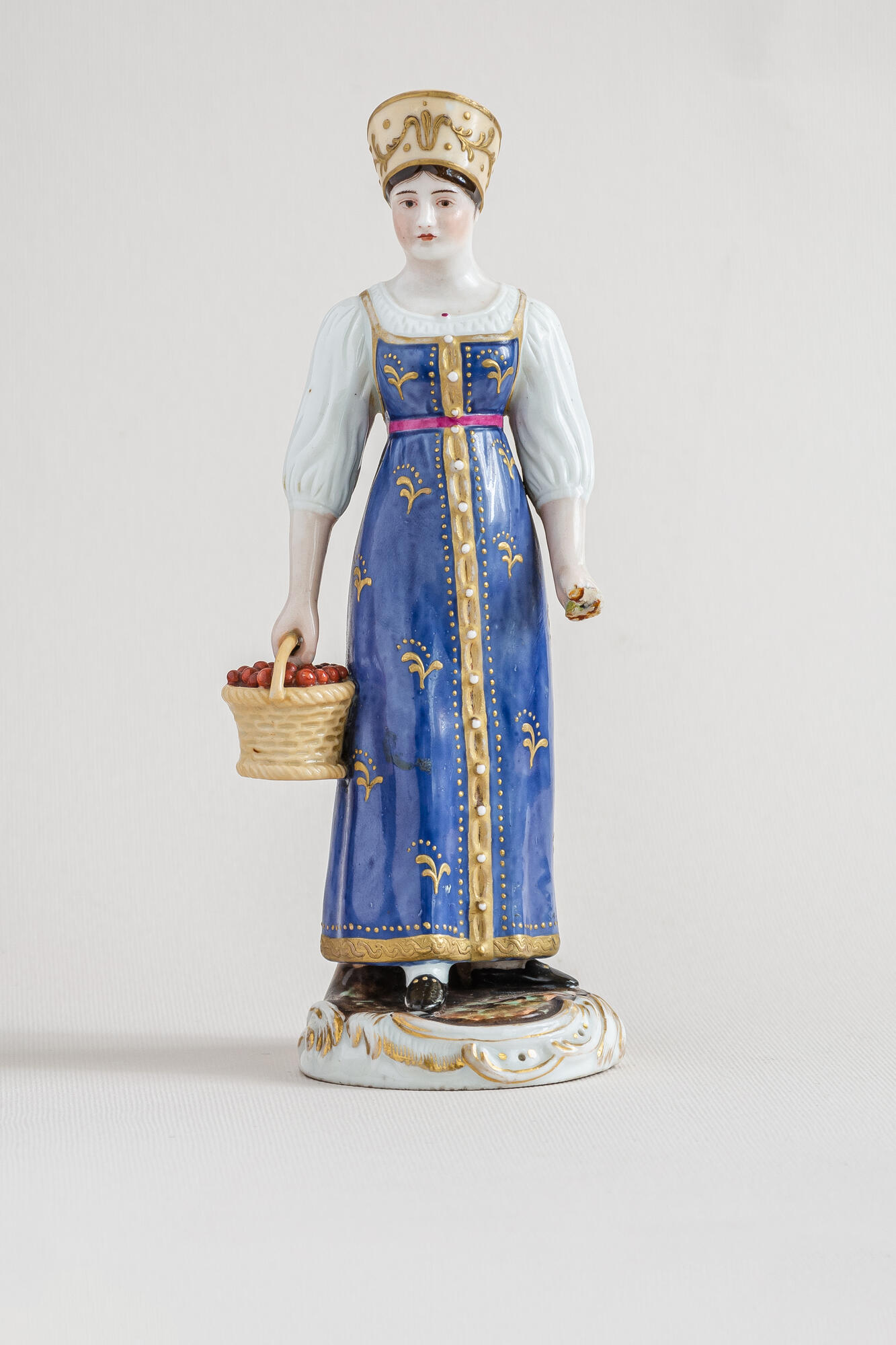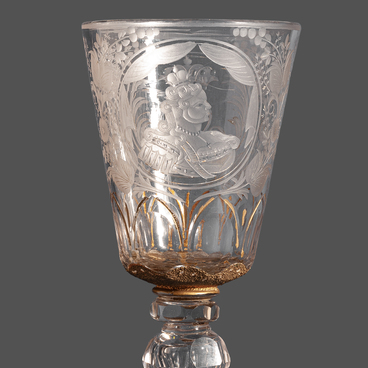The porcelain figurine ‘Peasant Woman’ was made at the Gardner Factory in the first third of the 19th century. It is a full-length figurine of a woman wearing a white blouse, blue sundress, and kokoshnik (traditional Russian headdress) and holding a basket of berries. The appearance of a peasant woman is idealized — she looks more like an ancient goddess than a common toiler. This sublime image became the hallmark of all the porcelain figurines created by Gardner’s craftsmen.
The porcelain factory in the village of Verbilki, the Moscow Governorate, was founded by Francis Gardner in 1766. The first craftsmen at the factory were foreigners — they were specially invited from Saxony. Thanks to their qualifications, Gardner quickly arranged the production of porcelain items, including porcelain figurines.
After the death of the factory founder, his son Franz became the general manager of the factory, and then Sarah, Gardner’s wife, assumed this position. At the beginning of the 19th century, Gardner’s younger sons, Alexander and Peter, took the management upon themselves. They managed to restart production, which by that time was in decline. At the end of the 1840s, the factory descended to the next generation — Vladimir and Alexander Gardner. They had to look for new ways of enterprise development, and only three of the numerous great-grandchildren of the founder tried to continue the family tradition.
In the middle of the 19th century, the production rate dropped again. In the 1860s, under Pavel Gardner’s management, the enterprise was gradually developing; however, after the government sharply reduced the customs tariff for imported goods, the factory began to experience severe difficulties with the sale of products.
In the 1880s, Elizabeth Gardner, Pavel’s wife, became the owner of the factory. In 1882, the enterprise was awarded the right to depict the state emblem on its products. By the end of the 1880s, production at the Gardner Factory was no longer profitable. Only a small number of porcelain figurines was produced during this period. In 1892, the factory was acquired by Matvey Kuznetsov with all the equipment, forms, samples of decorative paintings, and with the main part of craftsmen, workers and painters. The factory is still in operation today and is now called “Verbilki Porcelain”.
The porcelain factory in the village of Verbilki, the Moscow Governorate, was founded by Francis Gardner in 1766. The first craftsmen at the factory were foreigners — they were specially invited from Saxony. Thanks to their qualifications, Gardner quickly arranged the production of porcelain items, including porcelain figurines.
After the death of the factory founder, his son Franz became the general manager of the factory, and then Sarah, Gardner’s wife, assumed this position. At the beginning of the 19th century, Gardner’s younger sons, Alexander and Peter, took the management upon themselves. They managed to restart production, which by that time was in decline. At the end of the 1840s, the factory descended to the next generation — Vladimir and Alexander Gardner. They had to look for new ways of enterprise development, and only three of the numerous great-grandchildren of the founder tried to continue the family tradition.
In the middle of the 19th century, the production rate dropped again. In the 1860s, under Pavel Gardner’s management, the enterprise was gradually developing; however, after the government sharply reduced the customs tariff for imported goods, the factory began to experience severe difficulties with the sale of products.
In the 1880s, Elizabeth Gardner, Pavel’s wife, became the owner of the factory. In 1882, the enterprise was awarded the right to depict the state emblem on its products. By the end of the 1880s, production at the Gardner Factory was no longer profitable. Only a small number of porcelain figurines was produced during this period. In 1892, the factory was acquired by Matvey Kuznetsov with all the equipment, forms, samples of decorative paintings, and with the main part of craftsmen, workers and painters. The factory is still in operation today and is now called “Verbilki Porcelain”.



